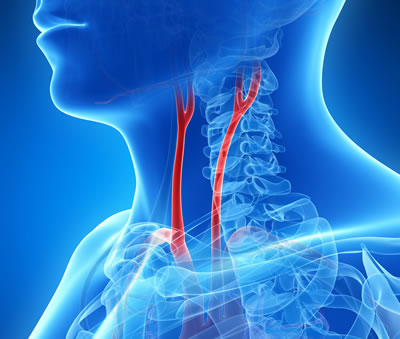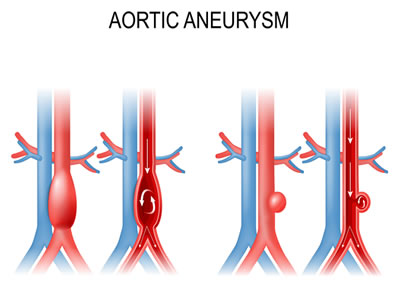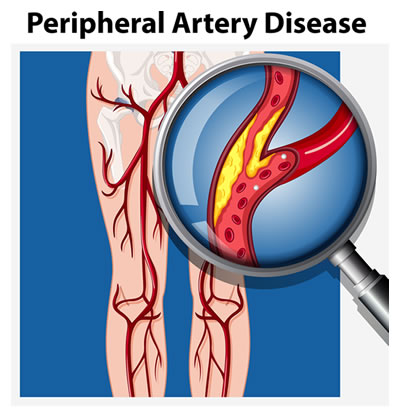Vascular Services
Diagnosis and Treatment
TCAR
Your body contains an intricate system of arteries and veins.
Most Americans are familiar with heart disease and with the consequences of blockages in the vessels that carry blood to and from the heart. But, few people realize that blockages caused by a buildup of plaque and cholesterol affect more than coronary arteries. Arteries throughout the body carry oxygen-rich blood away from the heart, so blockages can occur in all arteries with serious effects.
Common types of artery disease include:
Carotid artery disease is estimated to be the source of stroke in up to a third of cases, with 427,000 new diagnoses of the disease made every year in the United States alone. Carotid artery disease is a form of atherosclerosis, or a build-up of plaque in one or both of the main arteries of the neck. When plaque builds up in the carotid arteries, they begin to narrow and slow down blood flow, potentially causing a stroke if blood flow stops or plaque fragments travel to the brain.
Know the Signs and Symptoms of Stroke


A family history of aneurysm and smoking (even if you quit many years ago) may increase your risk for developing one. Other risk factors include high blood pressure and high cholesterol.
Aneurysms most commonly occur in the aorta, which is the body's biggest artery that runs from the heart through the abdomen. Aneurysms can also occur in the pelvis or behind the knee. In the aorta and pelvis, ruptured aneurysms can be fatal.
A ruptured aneurysm is a medical emergency. Call 911 or your local emergency number to seek immediate medical attention.
Risk factors for PAD include: a history of smoking, diabetes, advanced age, high blood pressure, excess weight, high cholesterol, and a family history of the disease.
Common peripheral artery disease signs and symptoms can be unexplained leg pain or cramping (especially during exercise or walking), skin problems or discoloration of the legs and feet, poor toenail growth, or leg or foot wounds that are slow to heal.

St. Luke's Vascular Lab is accredited by the Intersocietal Commission for the Accreditation of Vascular Laboratories and is committed to high quality patient care through diagnostic imaging. We meet nationally-recognized standards on state-of-the-art ultrasound equipment. All exams are performed by registered vascular technologists. A board-certified surgeon reviews all results.
Sources:
https://vascular.org/patient-resources/vascular-conditions/carotid-artery-disease
https://vascular.org/patient-resources/what-vascular-disease
https://www.heart.org/en/health-topics/aortic-aneurysm/what-is-an-aneurysm
https://vascular.org/patient-resources/vascular-conditions/abdominal-aortic-aneurysm
Your body contains an intricate system of arteries and veins.
Most Americans are familiar with heart disease and with the consequences of blockages in the vessels that carry blood to and from the heart. But, few people realize that blockages caused by a buildup of plaque and cholesterol affect more than coronary arteries. Arteries throughout the body carry oxygen-rich blood away from the heart, so blockages can occur in all arteries with serious effects.
Common types of artery disease include:
Carotid Artery Disease and Stroke
Carotid arteries in the neck bring oxygen to the brain. Patients who have had a stroke or a transient ischemic attack (TIA), also known as a warning stroke, will be referred to a vascular surgeon for diagnosis and treatment.Carotid artery disease is estimated to be the source of stroke in up to a third of cases, with 427,000 new diagnoses of the disease made every year in the United States alone. Carotid artery disease is a form of atherosclerosis, or a build-up of plaque in one or both of the main arteries of the neck. When plaque builds up in the carotid arteries, they begin to narrow and slow down blood flow, potentially causing a stroke if blood flow stops or plaque fragments travel to the brain.


Aneurysms
Aneurysms are bulges that develop in a weakened part of an artery.A family history of aneurysm and smoking (even if you quit many years ago) may increase your risk for developing one. Other risk factors include high blood pressure and high cholesterol.
Aneurysms most commonly occur in the aorta, which is the body's biggest artery that runs from the heart through the abdomen. Aneurysms can also occur in the pelvis or behind the knee. In the aorta and pelvis, ruptured aneurysms can be fatal.
A ruptured aneurysm is a medical emergency. Call 911 or your local emergency number to seek immediate medical attention.
Learn more about aneurysms in this brief video from Dr. Brian Peterson
Peripheral Artery Disease (PAD)
Peripheral Artery Disease (PAD) is a disease of the blood vessels outside the heart and brain. This condition is caused by a narrowing of vessels that carry blood to the legs and feet, arms, brain, stomach or kidneys. People with peripheral artery disease have a higher risk of coronary artery disease, heart attack or stroke.Risk factors for PAD include: a history of smoking, diabetes, advanced age, high blood pressure, excess weight, high cholesterol, and a family history of the disease.
Common peripheral artery disease signs and symptoms can be unexplained leg pain or cramping (especially during exercise or walking), skin problems or discoloration of the legs and feet, poor toenail growth, or leg or foot wounds that are slow to heal.

St. Luke's Vascular Lab is accredited by the Intersocietal Commission for the Accreditation of Vascular Laboratories and is committed to high quality patient care through diagnostic imaging. We meet nationally-recognized standards on state-of-the-art ultrasound equipment. All exams are performed by registered vascular technologists. A board-certified surgeon reviews all results.
Sources:
https://vascular.org/patient-resources/vascular-conditions/carotid-artery-disease
https://vascular.org/patient-resources/what-vascular-disease
https://www.heart.org/en/health-topics/aortic-aneurysm/what-is-an-aneurysm
https://vascular.org/patient-resources/vascular-conditions/abdominal-aortic-aneurysm

